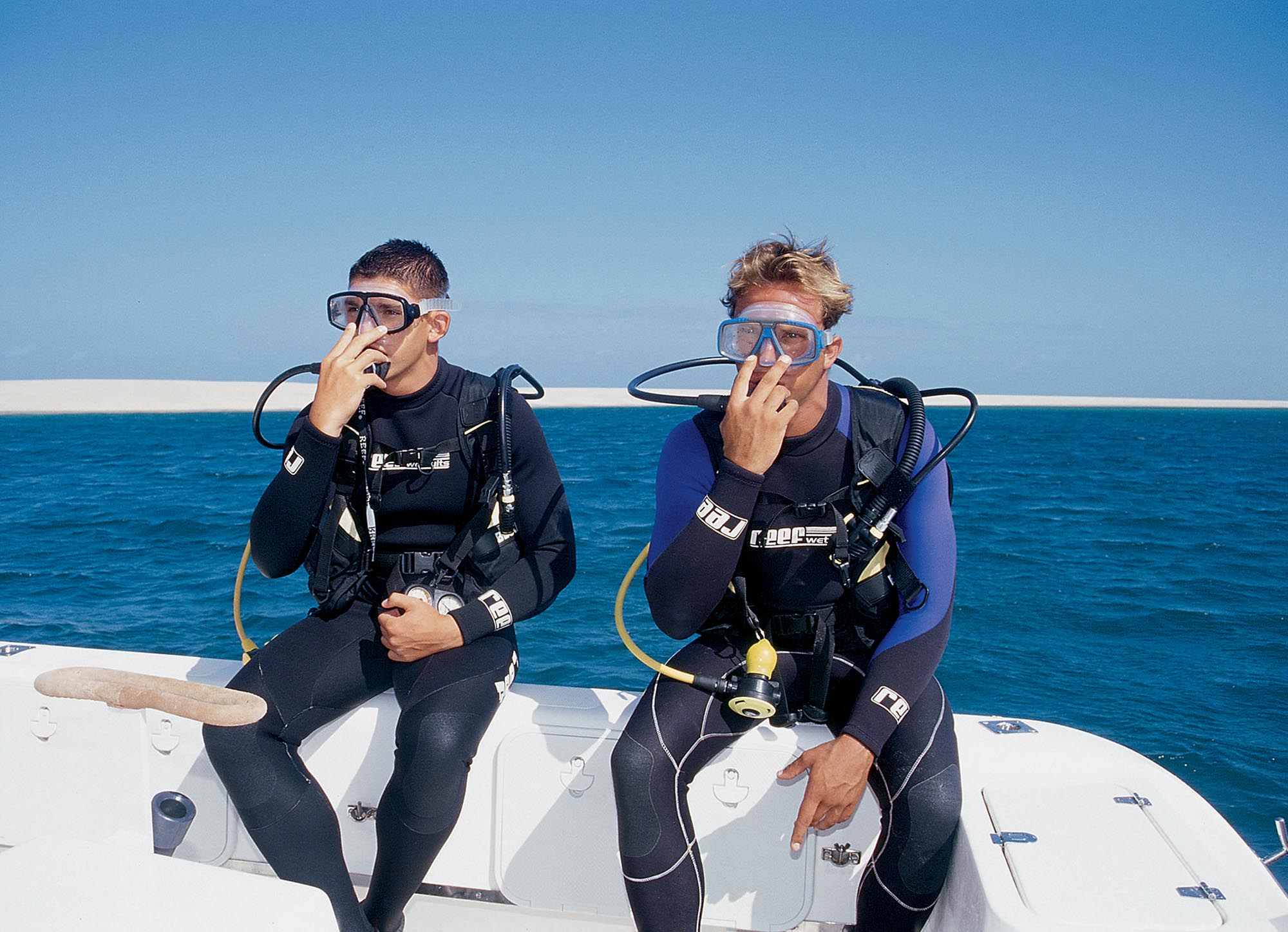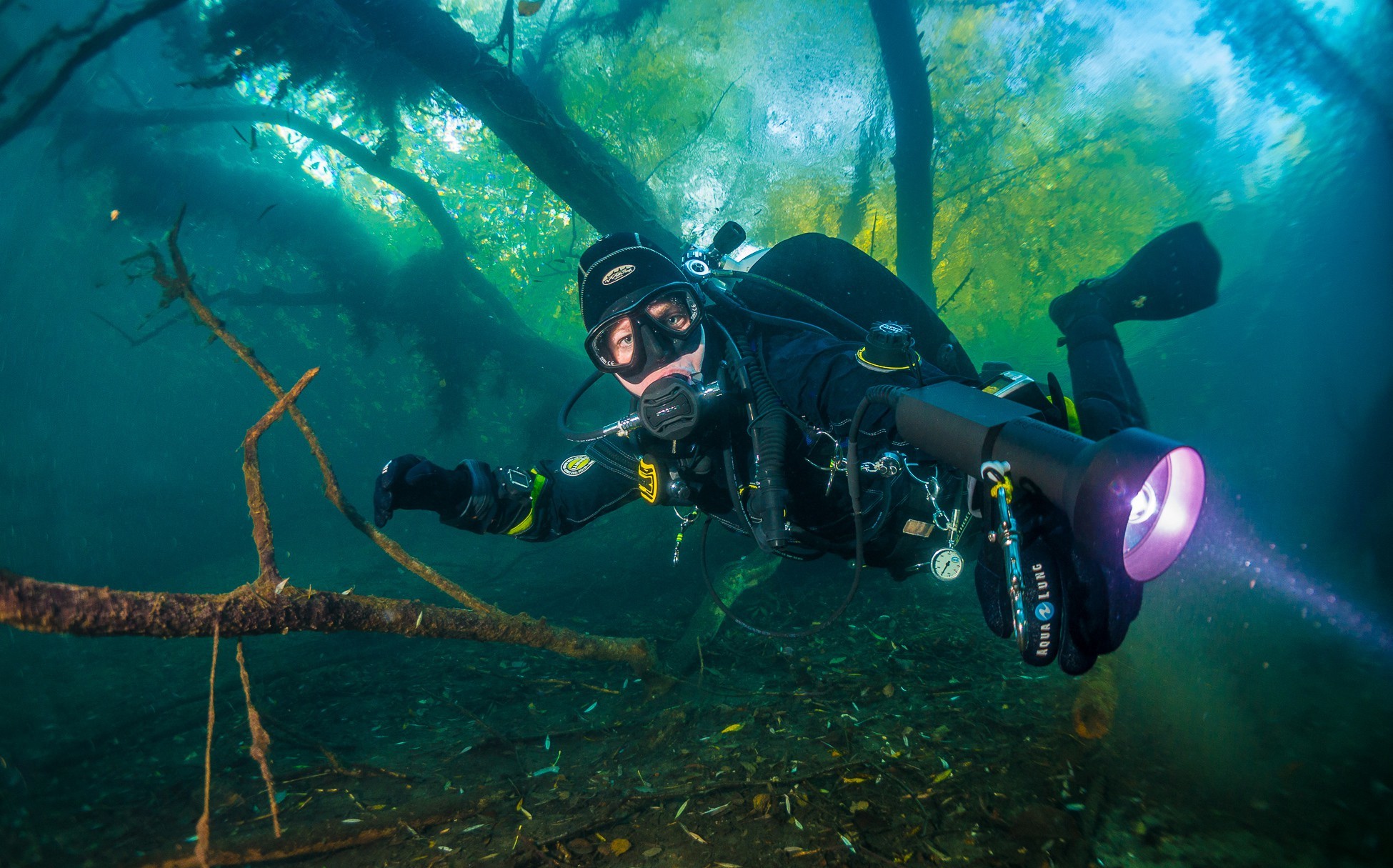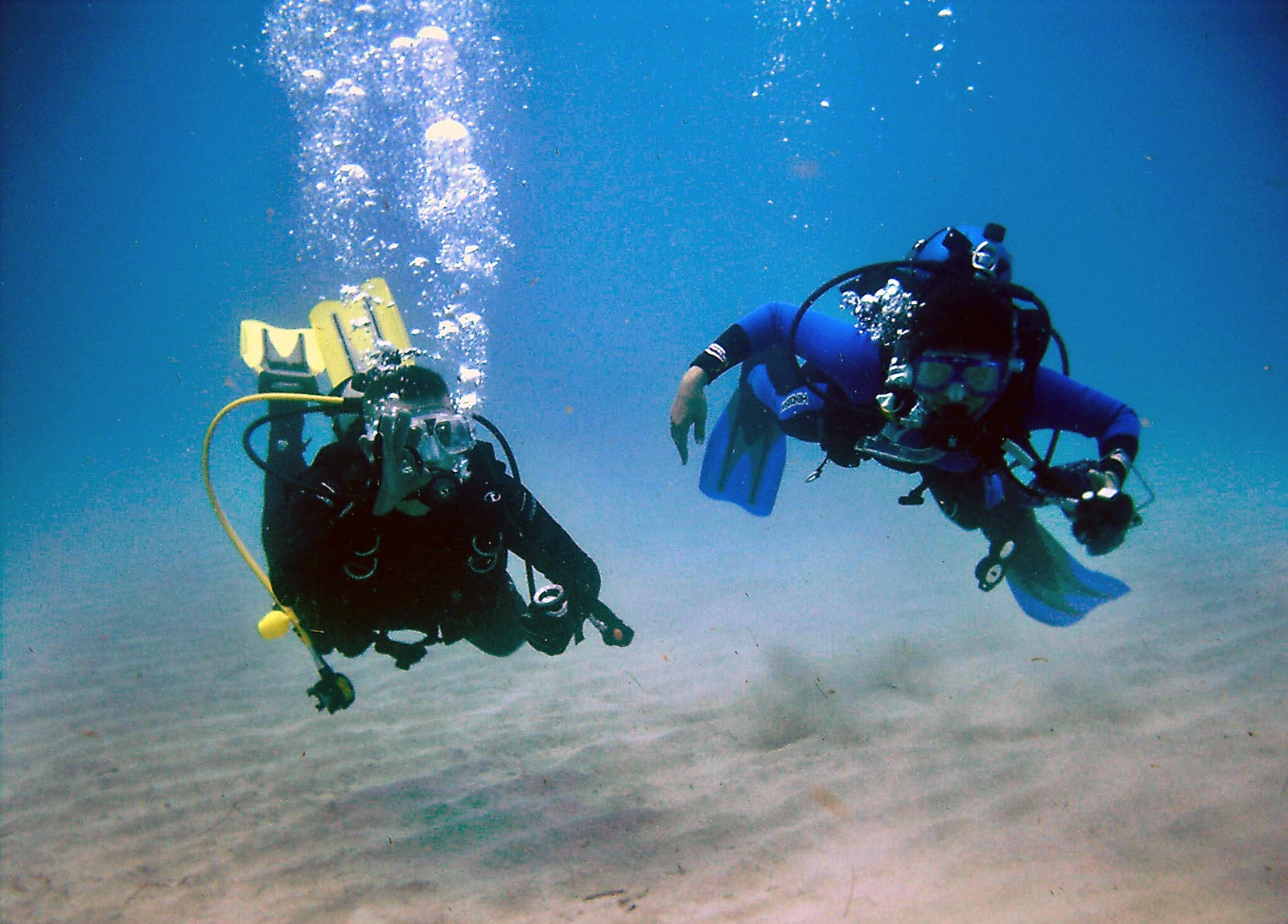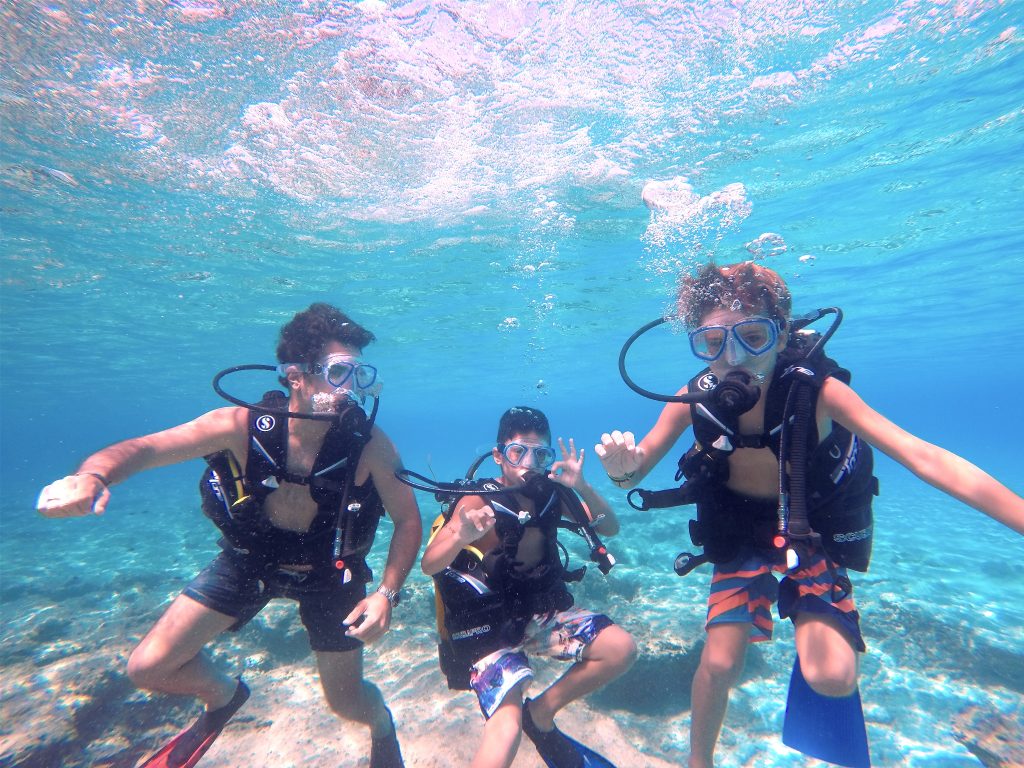
Dive Lights also known as divers torches, underwater flashlights, scuba diving lights, are used by scuba divers to illuminate a space while exploring the underwater world. Scuba diving flashlights or dive torches are specially designed so they can be submerged for long periods of time underwater. Dive lights are not your typical waterproof flashlights as they made to withstand the water pressure at deeper depths.
Recreational scuba divers who are interested in night diving, wreck diving, cave or cavern diving should have their own scuba diving light as part of their dive kit. While you can easily rent a waterproof flashlight from your dive shop, most often what they offer is pretty basic and might not be what you want or need. It is worth it to have your own dive torch especially if you want to experience the other fun aspects of scuba diving.
If you’re looking to buy a dive torch for the first time or want to upgrade your current dive light, then this post if for you! Continue reading if you need help choosing which scuba light is the right one for you!

WHY DO DIVERS USE A DIVE TORCH?
Recreational and technical scuba divers use diving lights for various reasons. While diving in the dark or in low visibility environments, dive torches can help divers see, communicate, and navigate better. Having a dive light on hand can help make their dives safer.
Dive torches are commonly used by scuba divers for night diving. However, its use is not limited to that. Even during the day, scuba divers use their underwater dive lights to explore areas where natural sunlight is not able to reach.
Scuba diving lights are also useful in showing the true colors you see underwater. Remember that the deeper you go underwater, the colors start to “disappear.” Your waterproof flashlight can help bring back colors lost in deeper waters. This is why many underwater photographers and videographers, use powerful underwater lights to help create beautiful underwater imagery.
In your case, why and how will you be using your dive torch? Do you just need it for a night dive or do you want to use it for something more? These are just some of the things you need to consider when choosing your diving light.
WHAT SHOULD YOU LOOK FOR IN A DIVE TORCH?
I can still remember the first dive torch I had purchased. Or rather it was purchased for me right before my first night dive in Coral Cay. I didn’t know anything about waterproof lights then and they just asked me if I wanted one for Php750 (approximately USD15). Having bought regular lights for way cheaper, I thought USD15 was pricey for a flashlight that can be submerged in water.
Boy, was I so wrong. Little did I know then that it was, in fact, the opposite. What I got was a very cheap waterproof flashlight for diving.
Had I done my research first, I definitely would not have chosen that light for myself. It was bright yellow made of plastic material. It used 3 type-c batteries which made it bulky and heavy. It dimmed easily and was only really good for night diving. All, I can say is that I will not recommend it to anyone!
After that, I wised up and bought a dive torch that I’m so much more happy with. If you don’t want to make the same mistakes that I did, here are the some factors and features you need to consider when buying a scuba diving light:
Brightness (Lumens)
Beam angle
Batteries and Run-time
Unique Features (Design/ Weight / Size / Colors / Mounts/ Etc.)
BRIGHTNESS
When it comes to assessing underwater dive lights, you will most likely encounter the term “lumens.” This refers to the amount of light you are getting from a bulb. The higher the lumens, the brighter the light. The lower the lumens, dimmer the light.
Dive light brightness can go from as low as 200 lumens to as high as 20000 lumens. The ideal brightness level will vary depending on where you go diving and what kind of diving you do. For recreational fun divers, an underwater flashlight in the 700-1000 lumens range would be a good place to start for your primary or main light.
If you are diving in environments where water is clear and visibility is great, you can make do with a dive light with minimal lumens output. In some cases, 200 lumens can actually work. But while it might work, you might not be so happy with the performance.
If there are many particles in the water, making it murky, you will definitely be needing a brighter scuba light. When you dive in places where visibility is bad, you will definitely want a dive light with higher lumens rating.
As someone who has been unsatisfied with a dive torch with low lumens, I now tend to favor dive lights that can give me at least 1000 lumens. In my experience, once you’ve gone brighter, it’s a bit harder to go back to dimmer lights. While you want something bright, just also be careful not to over do it. You also don’t want to “blind” the people with you. And some animals will also flee or hide when the light is extremely powerful.
A dive torch with 1000 lumens or higher works great while scuba diving at night, entering caverns, penetrating easy wrecks, and doing some beginner level underwater photography and videography.
BEAM ANGLE
A diver’s torch beam angle determines how big or small of an area will be lit by your underwater flashlight.
Dive lights with narrow beam angles are perfect for looking into nooks and crannies. Dive torches with a narrow beam is helpful when you want to draw attention to the cool sea creatures you encounter. The concentrated light can also help in communicating better with other divers as you point out things underwater.
Diving lights with wider beam angles are perfect for extremely low light areas or conditions. Wider light beams covers a bigger area. The light is basically more spread out. If you are night diving or in enclosed spaces, a wider light beam will help you see potential hazards in your immediate surroundings. If you’re into underwater videography, a wider beam is great for illuminating an bigger scene you want to capture on camera.
MODE
The most basic scuba diving flashlight will only have 1 mode which is the light you see when you turn on the device. Nowadays, dive torches can have different modes that will give you different light intensities for different dive conditions. Some dive lights will have 2 or more modes (low, medium and high light settings). Others will also have SOS mode for emergency situations.
Some divers will be happy with a flashlight with one mode, while others will be much happier with the versatility of having different settings at their convenience.
BATTERIES AND RUN TIME
Your dive torch is pretty much paper weight without the batteries. You can find diving lights that run on regular disposable batteries or one that has rechargeable batteries. While rechargeable diving lights tend to be more pricey upfront, they are actually more economical in the long run. They are also better for the environment too as you are not throwing away batteries as often.
Another feature you should is if the waterproof flashlight are factory sealed or not. Some rechargeable dive lights have their batteries “built-in” so you cannot remove or swap batteries every after a dive. According to manufacturers, this lessens the possibility of water leaking in the unit. The downside of this is you might need to wait between dives to recharge the unit and enter the water with a fully-charged battery.
Another important battery feature you need to look into is the run-time or how long you are able to use the lights at its highest setting. While a typical fun dive lasts from 45 minutes to an hour, will it be able to work if you want to do longer dives? When doing your night dive, will your light be able to last long enough to accommodate your water entry and exit? Will the light last long enough to be used during an emergency situation?

UNIQUE FEATURES (WEIGHT / SIZE / DESIGN/ COLORS / MOUNTS/ ETC.)
Aside from the previously mentioned factors, a good waterproof flashlight for diving is one that fits well in your hands and is easy to use while underwater. The actual user experience is one you should greatly consider. Some dive lights might be hard to control while wearing dive gloves. Or some have reported buttons or switches getting stuck.
Asses if the product size and weight will be suitable for you especially when you are carrying and wearing other gear with you. Bulky and heavier dive lights can affect the way you maneuver underwater. So find something small and compact, but powerful. If you travel often, look for a travel-friendly sized dive torch.
As you already know, scuba diving is a physically demanding activity so you should also get a dive light made with a sturdy materials. Cheaply made underwater flashlights can break easily, form cracks, and are prone to leaks. Choose one that can survive the rugged outdoor lifestyle of a scuba diver.
Waterproof flashlights for diving are often rated to 100 meters. Recreational divers can only dive up to 40 meters so depth rating on underwater torches shouldn’t be much of an issue. But just to be sure, double check how deep they’ve been tested on.
Other features that dive lights might have that you should consider are:
- colors for easier identification
- having a battery light indicator so you can be warned if battery is running low
- ability to switch beam angles between narrow and wide at your convenience
- multi-use for different environment and dive conditions you enjoy doing
- availability of other mounts so you can dive hands-free or place the flashlight somewhere else
PRICE
The cost is definitely a deciding factor for anyone buying a dive light. You can definitely find dive lights below $50 but when it comes to scuba gear in general, you get what you pay for. If you want to get quality lights that performs well and most important are reliable then it’s absolutely worth it to pay a little bit more.
Now that I’ve laid out some factors you should consider when buying your primary or main dive lights, I’ve narrowed it down to this list. I have only included lights that have met the following criteria:
- It should have at least 1000 lumens.
- It has multiple modes.
- It should last at least 1 hour in its highest settings.
- It has a battery indicator.
- It is a rechargeable dive light.
- It is light-weight and compact.
- Reasonably priced.
With these in mind, here are the top 10 recreational diver lights for 2022
- APLOS AP01: 1050lm, 3 modes, depth rating ipx8 100m 328ft, 1.5hrs battery life at highest setting, battery indicator, include 1pcs 3000mAh 18650 rechargeable battery and usb charger, light-weight and compact, super cost-effective pricing usd29.99/set.
- APLOS AP10: 1080lm, 5 modes , depth rating ipx8 100m 328ft, 1.5hrs battery life at highest setting, include 1pcs 3000mAh 18650 rechargeable battery and usb charger, light-weight and compact, super cost-effective pricing usd39.99/set
- APLOS AP11: 1050lm, 4 modes , depth rating ipx8 150m 492ft, 1.5hrs battery life at highest setting, include 1pcs 3000mAh 18650 rechargeable battery and usb charger, light-weight and compact, super cost-effective pricing usd45.99/set.
- APLOS AP02: 2000lm, 3 modes , depth rating ipx8 150m 492ft, 1.5hrs battery life at highest setting, include 2pcs 3000mAh 18650 rechargeable battery and usb charger, light-weight and compact, super cost-effective pricing usd56.99/set.
- APLOS AP30: 3100lm, 3 modes , depth rating ipx8 100m 328ft, 1.5hrs battery life at highest setting, include 2pcs 3000mAh 18650 rechargeable battery and usb charger, light-weight and compact, super cost-effective pricing usd59.99/set.
- APLOS AP40: 4000lm, 3 modes , depth rating ipx8 150m 492ft, 1.5hrs battery life at highest setting, include 1pcs 3000mAh 18650 rechargeable battery and usb charger, light-weight and compact, super cost-effective pricing usd66.99/set.
- APLOS AP50: 3200lm, 3 modes , depth rating ipx8 150m 492ft, 1.5hrs battery life at highest setting, include 2pcs 3000mAh 18650 rechargeable battery and usb charger, light-weight and compact, super cost-effective pricing usd69.99/set.
- APLOS AP51: 3500lm, 4 modes , depth rating ipx8 150m 492ft, 1.5hrs battery life at highest setting, include 1pcs 5000mAh 26650 rechargeable battery and usb charger, light-weight and compact, super cost-effective pricing usd79.99/set.
- APLOS AP60: 6000lm, 4 modes , depth rating ipx8 150m 492ft, 1.5hrs battery life at highest setting, include 2pcs 5000mAh 26650 rechargeable battery and usb charger, light-weight and compact, super cost-effective pricing usd89.99/set.
- APLOS AP70C underwater photopraphy and videography light: 3000lm, 5 modes , depth rating ipx8 100m 328ft, 2.5hrs battery life at highest setting, include 1pcs 5000mAh 26650 rechargeable battery and usb charger, light-weight and compact, super cost-effective pricing usd99.99/set.

DO I NEED TO GET A SECONDARY OR BACK UP LIGHT?
For your own piece of mind and safety, having a secondary light or back up light is the smart thing to do. If you are diving at night, in caves or enclosed spaces, you should take a back up light in case something happens to your primary or main light. Dive gear can malfunction anytime. Even if you pay for a more expensive dive light, it does not guarantee your safety.
Some divers will choose a backup light that is of the same quality as their primary light. But you can also carry one that is less bright and has lesser features if you are trying to save some money. Find one that you can easily stow in your BCD pocket or clip to one of the D-rings in your BC. What’s important is that it is reliable and will perform during an emergency. It should be able to help you safely exit the water should your main light fail.
Aside from carrying secondary or backup lights, you can also bring your own scuba tank marker lights. This is a small light beacon you can attach to your tank so it is easier to see divers in the water. To learn more about this diving accessory, you can check out my list of best dive tank marker lights.
HOW TO TAKE CARE OF YOUR DIVE LIGHT
When scuba gear malfunctions or doesn’t perform as they should, often times it was because it was not properly maintained. You need to take care of your dive light the same way you take care of your other dive gear and equipment– with lots of love!
- Make sure to rinse your dive light in fresh, clean water after each dive.
- Dry it completely before storing it.
- If batteries can be removed, take them out from the flashlight. If you don’t intend to use the flashlight for months, recharge the batteries to make sure they still fully function. Batteries can die when left unused for long periods of time.
- When preparing your dive torch before a dive, double-check the o-rings. Grease the o-rings as recommended by the manufacturers. Make sure the o-rings are cleaned and correctly positioned. To prevent flooding, check all seals and make sure that no hair, fibers, or small particles are stuck in between any openings.
- When traveling, remove the batteries to prevent your flashlight from accidentally switching on. If it has a travel mode setting, activate it. You can also use a protective case to prevent it from bouncing around your luggage while in transit.
- Don’t forget to fully charge your dive lights before entering the water.

